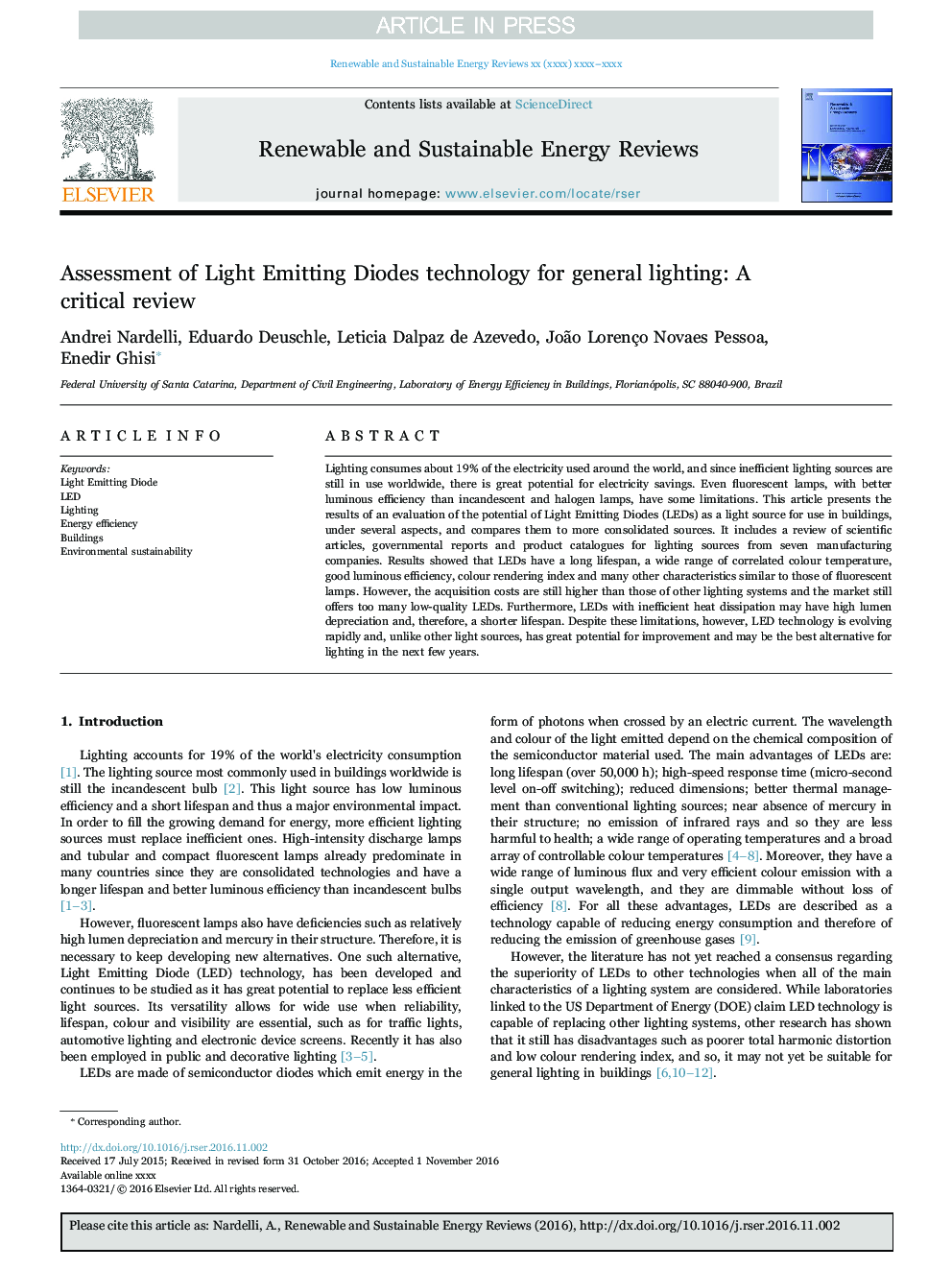| Article ID | Journal | Published Year | Pages | File Type |
|---|---|---|---|---|
| 5482845 | Renewable and Sustainable Energy Reviews | 2017 | 12 Pages |
Abstract
Lighting consumes about 19% of the electricity used around the world, and since inefficient lighting sources are still in use worldwide, there is great potential for electricity savings. Even fluorescent lamps, with better luminous efficiency than incandescent and halogen lamps, have some limitations. This article presents the results of an evaluation of the potential of Light Emitting Diodes (LEDs) as a light source for use in buildings, under several aspects, and compares them to more consolidated sources. It includes a review of scientific articles, governmental reports and product catalogues for lighting sources from seven manufacturing companies. Results showed that LEDs have a long lifespan, a wide range of correlated colour temperature, good luminous efficiency, colour rendering index and many other characteristics similar to those of fluorescent lamps. However, the acquisition costs are still higher than those of other lighting systems and the market still offers too many low-quality LEDs. Furthermore, LEDs with inefficient heat dissipation may have high lumen depreciation and, therefore, a shorter lifespan. Despite these limitations, however, LED technology is evolving rapidly and, unlike other light sources, has great potential for improvement and may be the best alternative for lighting in the next few years.
Related Topics
Physical Sciences and Engineering
Energy
Renewable Energy, Sustainability and the Environment
Authors
Andrei Nardelli, Eduardo Deuschle, Leticia Dalpaz de Azevedo, João Lorenço Novaes Pessoa, Enedir Ghisi,
